|
March 1958 Popular Electronics
 Table
of Contents Table
of Contents
Wax nostalgic about and learn from the history of early electronics. See articles
from
Popular Electronics,
published October 1954 - April 1985. All copyrights are hereby acknowledged.
|
In March of 1958 when this
article appeared in Popular Electronics, learning of semiconductor devices other
than transistors was usually new to experienced professionals as well as to hobbyists.
Vacuum tubes still dominated electronic products in the day. Companies like General
Electric, Sylvania, and RCA were the pioneers for development of Zener diodes, photodiodes,
SCRs, thyristors, etc. Relatively simple compounds like selenium, germanium, silicon, and lead
and cadmium sulphides were used. The exotic witch's brew of elements in modern
semiconductors - particularly those used to photovoltaics - were likely not even
envisioned in 1958. This article discusses some of "new" devices using simple
compounds.
See other "Transistor Topics" in the series:
January 1956,
December
1957, March 1958,
February
1960, April 1960
Transistor Topics
By Lou Garner
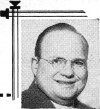 The use of semiconductor devices other than
transistors is expanding rapidly. Such devices bear approximately the same relationship
to the transistor that industrial control tubes, thyratrons, heavy-duty rectifiers,
phototubes, and gaseous voltage regulators bear to the vacuum tube. The use of semiconductor devices other than
transistors is expanding rapidly. Such devices bear approximately the same relationship
to the transistor that industrial control tubes, thyratrons, heavy-duty rectifiers,
phototubes, and gaseous voltage regulators bear to the vacuum tube.
Small diode detectors and semiconductor power rectifiers have been used for years
- even before the invention of the transistor. In addition, many special-purpose
semiconductor diodes are either in current production or are being developed. Available
units include diodes designed to operate at the Zener point as voltage regulators,
and light-sensitive photodiodes.
The Zener diode is operated with a voltage applied in its reverse (or high-resistance)
direction at or very near to its nominal "breakdown" (Zener) voltage. When the applied
voltage increases slightly, the diode's resistance suddenly drops from a moderately
high to a very low value. In conjunction with a fixed series resistor, such units
can serve as effective voltage regulators and are similar in operation and application
to the "VR" series of gas-filled voltage regulator tubes.
Photodiodes are made in a variety of styles and types. Virtually all types of
semiconductor materials are used in their construction, including selenium, germanium,
silicon, and lead and cadmium sulphides. They range in size from Sylvania's minute
1N77A, a germanium photocell smaller than a matchstick, to the large selenium "sun
batteries" manufactured by International Rectifier Corp.
Even General Electric Co.'s Unijunction transistor is, in reality, a special-purpose
semiconductor device rather than a conventional transistor. Originally called a
"double-base diode," it has characteristics roughly like those of a small gas-filled
thyratron tube. G.E. is also developing a special silicon-controlled rectifier which
may serve as a possible replacement for both power relays and medium-sized thyratrons.
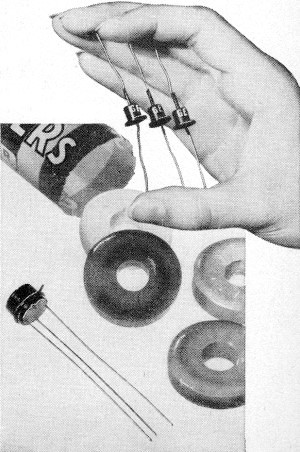
Semiconductor devices currently being produced by General Electric
Co. include low-current silicon rectifiers (above, right), and a silicon double-based
diode (right, compared in size with Life Savers). The tab protruding from the cap
of the diode serves as a ground for shielding purposes.
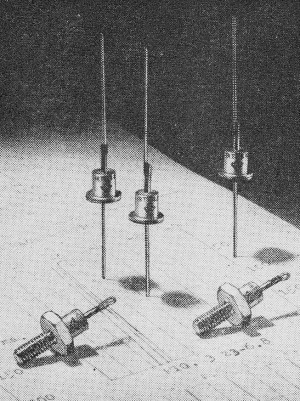
Zener diodes, such as these
1, and 3.5-watt units available from International Rectifier Corp., make effective
voltage regulators.
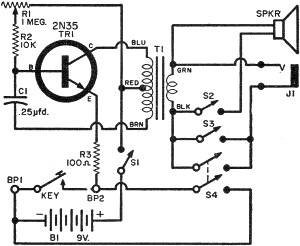
Fig. 1 - Jack Yundt's "Handy Audi" test instrument adapted from
POP'tronics circuit.
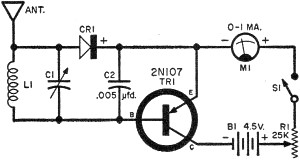
Fig. 2 - Ronald Wilensky's simple field strength meter described
fully in the article.
In fact, almost all semiconductor manufacturers are designing and developing
new solid-state devices to replace standard ther-mionic tubes. RCA, for example,
is working on a "Thyristor," which may be operated either as a bi-stable switching
element or as a conventional high-frequency transistor.
Shockley's new "Bistable" diode is a four-layer silicon device having alternate
layers of n-type and p-type materials. When a control voltage is applied to its
two electrodes, it can be switched from a high-impedance state with a resistance
of from 1 to 100 megohms to a low-impedance state with a resistance of less than
20 ohms. In this respect, its action is much like that of a small neon bulb. It
can be used in similar applications, for example, in a saw-tooth oscillator or pulse
generator.
As designers and engineers learn more about solid-state physics, you can expect
to see more new semiconductor devices.
Readers' Circuits. While a good many home experimenters like
to work on and to experiment with original circuits, a high percentage prefer to
adapt "standard" circuits they have seen in magazine articles and books to their
own requirements. Often, this takes as much ingenuity and skill as is required to
"dream up" a new circuit. This month we are featuring a pair of interesting circuits
which our readers have adapted to their own needs.
Handy Audi. S/Sgt. Jack W. Yundt (AF 14504821, 45 Ftr. Day. Sq., Box 473, APO
117, New York, N. Y.) is, to use his own words, "an amplifier tinker." When he saw
Transtopic Experiment No. 15 in the February 1957 issue of POP'tronics (page 85),
he decided to turn the original circuit (a simple code practice oscillator) into
a multi-purpose audio test instrument. He dubbed his completed test gadget "Handy
Audi" (see Fig. 1).
It can be used as: (a) a code practice oscillator (CPO) with loudspeaker output,
(b) a CPO with headphone output, (c) an audible tone source, and (d) an audio test
signal source.
In operation, a single n-p-n transistor is used as a common-emitter audio oscillator,
with transformer T1 serving both to provide the feedback necessary to start and
sustain oscillation and to match the transistor to a loudspeaker's low-impedance
voice coil. The feedback signal obtained from the transformer is coupled back to
the transistor's base electrode through d.c. blocking capacitor C1. Base bias current
is supplied through R1 and R2. Unbypassed emitter resistor R3 serves to stabilize
circuit operation. Operating power is supplied by a 9-volt battery, B1, controlled
by s.p.s.t. on-off switch 81. The other components and switches permit the circuit's
operation to be modified for special applications.
All components used are standard and should be readily available. R1 is a small
potentiometer - its taper is not critical. R2 and R3 are 1/2-watt resistors. C1
can be a tubular paper or miniature ceramic capacitor. S1, S2, and S3 are s.p.s.t.
toggle or slide switches, while S4 is a d.p.s.t. unit. T1 is an Argonne Type AR-119
transistor output transformer. The PM loudspeaker can be a 3" to 6" unit with a
3- or 4-ohm voice coil. J1 is a standard open circuit jack; BP1 and BP2 are binding
posts. The power supply battery, B1, can be a standard 9-volt transistor battery
or 1 1/2-volt cells.
Sergeant Yundt assembled his unit in a plastic case about the size of a table-model
a.c.-d.c. receiver. Since neither lead dress nor circuit layout is critical, however,
you can use any size of case you wish.
To use the completed instrument as a CPO with loudspeaker output, connect a hand
key to binding posts BP1 and BP2 and close switches S1 and S2. With the key depressed,
adjust R1 for desired operation. If headphone operation is preferred, a pair of
electromagnetic headphones is plugged into jack J1, and switch S3 is closed. Switch
S2 is opened to silence the speaker.
For use as an audible tone source, the key may be removed. Switches S1, S2 and
S4 are closed, With this setup, a steady tone is obtained from the loudspeaker.
This is handy for such purposes as checking microphone placement in p.a. installations.
Finally, to operate the instrument as an audio signal source, a test probe (simply
a shielded lead with a 0.5-.μfd. d.c, blocking capacitor in series with the central
"hot" lead) is plugged into jack J1. Switch S2 is opened and switches S1, S3 and
S4 closed. The audio signal obtained from the probe can be used for signal injection
tests of phonograph amplifiers, p.a. systems, intercoms or other types of audio
amplifiers, including the audio sections of radio and TV receivers.
Field Strength Meter. If, at first glance, the circuit in Fig. 2 looks somewhat
like one of the simple diode and transistor receiver circuits you've seen featured
in past columns, don't be too surprised. Actually, it is such a receiver, but Ronald
Wilensky (KN2ZPV), of 920 East 17th St., Brooklyn, N. Y., has modified the basic
circuit for use as an inexpensive field strength meter.
In operation, r.f. signals picked up by the antenna are selected by tuned circuit
L1-C1 and coupled to a 1N64 diode detector, CR1. C2 serves as an r.f. bypass capacitor,
insuring that only the d.c. component of the detected signal is fed to the base-emitter
circuit of the p-n-p transistor. The transistor, in turn, is used as a common-emitter
d.c. amplifier, with its output indicated as a deflection on the 0-1 milliammeter.
Operating power is supplied by a 4.5-volt battery, B1, controlled by the s.p.s.t.
"power" switch S1. Series rheostat R1 serves as a sensitivity control.
Using readily available components, construction is straightforward and should
pose no problems. For best results, Ron indicates that the instrument should be
assembled in a plastic case. L1 and C1 are chosen to cover the frequency band of
interest to the individual builder. For the 27.255-mc. R/C band, Ron suggests that
L1 be made up of 12 turns of #16 wire, wound on a coil form 5/8" in diameter by
1" long. C1, in this case, can be a 25-μμfd. variable. The antenna's length may
be varied to suit individual requirements - Ron used a straightened piece of "coat
hanger" wire.
Sun Batteries. Some time ago, we announced that the International
Rectifier Corp. (1521 East Grand Ave., El Segundo, Calif.) was planning to introduce
a new series of inexpensive silicon solar cells. These units are now in full production.
They have an active area of about 0.78 square inch.
Mounted and unmounted styles are available in both "standard" and "selected"
(optimum output) versions. Prices range from $4.00 for an unmounted "standard" cell
(Type No. SA5-PL) to $8.00 for a mounted "selected" unit (Type No. SA5A-M). A standard
cell can deliver over 20 milliwatts into a 4-ohm load with an illumination of 5000
foot-candles. Its open circuit voltage at this light level is about 0.45 volt.
Product News. An important step towards the standardization
of transistor types has been taken by Raytheon and Tung-Sol Electric. Both of these
firms are now producing several transistors under the same EIA-registered type number.
Another new transistor manufacturer has entered the field-Fairchild Semi-Conductors
Corp., Palo Alto, Calif. This new firm is sponsored by the well-known Fairchild
Camera and Instrument Corp. Present plans call for the development and production
of silicon diffused transistors and other semiconductor components.
Zenith and Philco are now producing fully transistorized portable short-wave
receivers. Both are multiband sets, and sell for well over two hundred dollars each.
RCA has introduced several new transistor types. The 2N404 is a p-n-p junction
transistor designed for use in switching circuits, has a maximum collector current
rating of 100 ma., a maximum dissipation of 120 mw., and an alpha cutoff frequency
of 4 mc. The 2N408 is a p-n-p junction transistor intended for Class A and Class
B audio service in entertainment-type receivers; a pair of 2N408's in Class B push-pull
can deliver a 160-mw. output signal with a 9-volt power supply. The 2N407 is similar
to the 2N408 except for basing.
Lansdale Tube Company, a division of Philco, has introduced a new series of MADT
(Micro Alloy Diffused-base Transistor) v.h.f. transistors. One of these units will
serve as an oscillator up to 1000 mc.
That's the show for now, fellows. See you next month.
Lou
Posted April 30, 2019
(updated from original post on 8/132012)
|




























 The use of semiconductor devices other than
transistors is expanding rapidly. Such devices bear approximately the same relationship
to the transistor that industrial control tubes, thyratrons, heavy-duty rectifiers,
phototubes, and gaseous voltage regulators bear to the vacuum tube.
The use of semiconductor devices other than
transistors is expanding rapidly. Such devices bear approximately the same relationship
to the transistor that industrial control tubes, thyratrons, heavy-duty rectifiers,
phototubes, and gaseous voltage regulators bear to the vacuum tube. 



